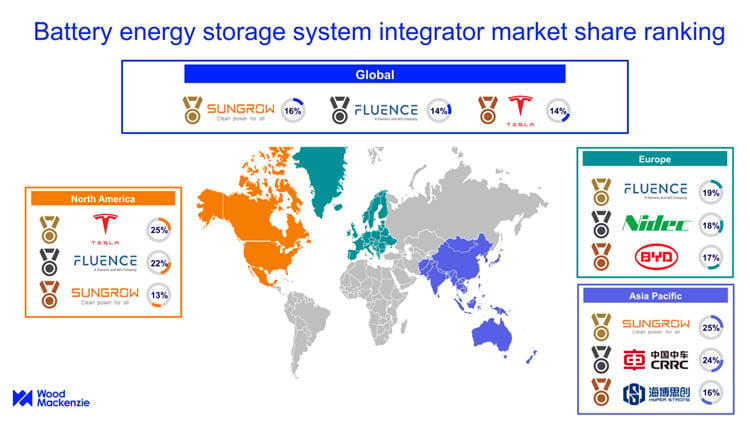Report on Ballard Power Systems’ FCmove®-SC Fuel Cell and its Contribution to Sustainable Development Goals
Introduction
Ballard Power Systems has announced the forthcoming launch of its new-generation fuel cell module, the FCmove®-SC, specifically engineered for city transit buses. This development represents a significant step towards achieving key United Nations Sustainable Development Goals (SDGs) by providing a cleaner, more efficient, and economically viable alternative to traditional diesel-powered public transportation. The module’s design focuses on lower lifecycle costs, simplified vehicle integration, and enhanced performance, directly supporting the global transition to sustainable energy and infrastructure.
Technological Advancements and Performance Specifications
The FCmove®-SC module introduces several key engineering improvements designed to accelerate the adoption of zero-emission transit solutions. These advancements contribute to both operational efficiency and environmental sustainability.
- Increased Power and Durability: A 30% increase in system power at end-of-life, with improved durability and wider operating temperatures.
- Compact Design: A 25% increase in volumetric power density achieved through the integration of the DC/DC converter, simplifying vehicle design.
- Improved Thermal Management: A 25% higher maximum radiator outlet temperature (75°C), which simplifies vehicle cooling systems and allows for more efficient waste heat recovery for cabin heating.
- Simplified Architecture: A 40% reduction in the total number of parts, which reduces manufacturing complexity and maintenance requirements.
- Operational Longevity: The system is designed for an expected service life of approximately 25,000 operating hours, aligning with the demands of public transit duty cycles.
Direct Contributions to Sustainable Development Goals (SDGs)
The FCmove®-SC fuel cell module is a direct enabler of progress across multiple SDGs, positioning it as a critical technology for sustainable urban development.
- SDG 7: Affordable and Clean Energy: The technology provides a zero-emission power source for public mobility. By focusing on reducing lifecycle costs to approach parity with diesel, Ballard is working to ensure access to affordable, reliable, and modern energy for the transportation sector.
- SDG 9: Industry, Innovation, and Infrastructure: This fuel cell represents a significant industrial innovation. Its simplified integration and intelligent fleet services support the development of resilient, sustainable, and reliable public transport infrastructure, a cornerstone of modern urban planning.
- SDG 11: Sustainable Cities and Communities: By powering zero-emission city buses, the FCmove®-SC directly addresses urban air pollution and public health. This contributes to making cities and human settlements inclusive, safe, resilient, and sustainable.
- SDG 12: Responsible Consumption and Production: The module’s design, which features a 40% reduction in parts and an extended service life, promotes more sustainable production patterns and resource efficiency, reducing waste over the product’s lifecycle.
- SDG 13: Climate Action: The primary function of the FCmove®-SC is to replace fossil fuel-based systems. This provides a direct and urgent action to combat climate change by significantly reducing greenhouse gas emissions from the public transportation sector.
Operational and Commercial Viability
Ballard has engineered the FCmove®-SC to overcome key barriers to the widespread adoption of fuel cell technology in public transit fleets. The focus extends beyond environmental benefits to include practical advantages for manufacturers and operators.
Key Benefits for Stakeholders
- Lower Lifecycle Cost: Optimized for a peak power of at least 75 kW with higher thermal margins, the system improves efficiency and reduces operating costs, moving closer to total cost of ownership parity with diesel buses.
- Simplified Integration: Consolidating the DC/DC converter and power controller into a smaller package with fewer external interfaces reduces complexity and cost for vehicle manufacturers.
- Intelligent Fleet Services: The integration with Ballard’s FCServiceCloud Customer Insight portal enables predictive maintenance, maximizing vehicle uptime and lowering support costs for transit operators.
- Enhanced Safety: The architecture introduces passive safety features, including an internal geometry that inhibits hydrogen-related risks, reducing reliance on active safety controls.
1. Which SDGs are addressed or connected to the issues highlighted in the article?
Explanation:
The article on Ballard Power Systems’ new FCmove®-SC fuel cell module for city transit buses connects to several Sustainable Development Goals. The core theme is the development and deployment of a clean energy technology to replace fossil fuel-based systems in public transportation, which has direct implications for energy, infrastructure, urban living, and climate change.
- SDG 7: Affordable and Clean Energy: The article focuses on a fuel cell, a clean energy technology. The stated goal of achieving “diesel parity” in terms of lifecycle cost directly addresses the affordability aspect of clean energy solutions.
- SDG 9: Industry, Innovation, and Infrastructure: The development of the new-generation FCmove®-SC module is a clear example of industrial innovation. The article details technological advancements (higher power density, fewer parts) and aims to upgrade public transport infrastructure (city buses) to be more sustainable and efficient.
- SDG 11: Sustainable Cities and Communities: The technology is specifically “designed for city transit duty.” By providing a zero-emission alternative to diesel buses, it directly contributes to improving urban air quality and creating more sustainable public transport systems, which are crucial for sustainable cities.
- SDG 13: Climate Action: Replacing diesel-powered buses with zero-emission fuel cell buses is a direct action to combat climate change by reducing greenhouse gas emissions from the transportation sector.
2. What specific targets under those SDGs can be identified based on the article’s content?
Explanation:
The article’s details about the new fuel cell technology and its intended application align with several specific SDG targets.
- Target 7.2: By 2030, increase substantially the share of renewable energy in the global energy mix. The promotion and adoption of fuel cell buses, which are a form of clean energy mobility, contribute to increasing the share of non-fossil fuel energy in the transport sector.
- Target 9.4: By 2030, upgrade infrastructure and retrofit industries to make them sustainable, with increased resource-use efficiency and greater adoption of clean and environmentally sound technologies. The article is centered on a clean technology (fuel cell) designed to upgrade public transit infrastructure (buses), with explicit mentions of improved efficiency and a “40% reduction in total part count.”
- Target 11.2: By 2030, provide access to safe, affordable, accessible and sustainable transport systems for all. The fuel cell aims to make public transit more sustainable (zero-emission), safer (“enhanced safety is central”), and more affordable through a “lower lifecycle cost” that moves “closer to diesel parity.”
- Target 11.6: By 2030, reduce the adverse per capita environmental impact of cities, including by paying special attention to air quality. Ballard’s vision of “zero-emission PEM fuel cells” directly addresses this target by eliminating tailpipe emissions from city buses, thereby improving urban air quality.
3. Are there any indicators mentioned or implied in the article that can be used to measure progress towards the identified targets?
Explanation:
The article provides several specific, quantifiable metrics that can serve as indicators for measuring progress towards the identified targets.
- Indicator for Target 7.2 & 9.4 (Clean Energy Share & Efficiency): The article mentions several performance metrics that indicate technological advancement and efficiency:
- “30% increase in system power”
- “25% increase in volumetric power density”
- “40% reduction in total part count”
- Expected service life of “approximately 25,000 operating hours”
- Indicator for Target 11.2 (Affordable and Sustainable Transport): The progress towards affordability is explicitly measured by the goal of achieving “diesel parity.” Therefore, a key indicator is the:
- Total Cost of Ownership (TCO) compared to legacy diesel systems. The article states the new design results in “lower lifecycle cost.”
- Indicator for Target 11.6 (Reduced Environmental Impact): The primary indicator is the reduction of pollutants. While not quantified, the technology is described as “zero-emission,” implying:
- Measurement of greenhouse gas and air pollutant (e.g., NOx, particulate matter) emissions from the transit fleet, which would be zero at the tailpipe for these buses.
4. Table of SDGs, Targets, and Indicators
| SDGs | Targets | Indicators |
|---|---|---|
| SDG 7: Affordable and Clean Energy | 7.2: Increase the share of renewable/clean energy. | Number of diesel buses replaced by zero-emission fuel cell buses. |
| SDG 9: Industry, Innovation, and Infrastructure | 9.4: Upgrade infrastructure with clean and environmentally sound technologies. | – 30% increase in system power. – 25% increase in volumetric power density. – 40% reduction in total part count. |
| SDG 11: Sustainable Cities and Communities | 11.2: Provide access to safe, affordable, and sustainable transport systems. | – Total Cost of Ownership (TCO) relative to diesel buses (“diesel parity”). – Implementation of enhanced passive safety features. |
| SDG 11: Sustainable Cities and Communities | 11.6: Reduce the adverse per capita environmental impact of cities (e.g., air quality). | Reduction in tailpipe emissions from public transit fleets (implied to be 100% for pollutants as it’s a “zero-emission” technology). |
| SDG 13: Climate Action | 13.2: Integrate climate change measures into policies and planning. | Adoption rate of zero-emission bus technology by city transit authorities. |
Source: prnewswire.com







